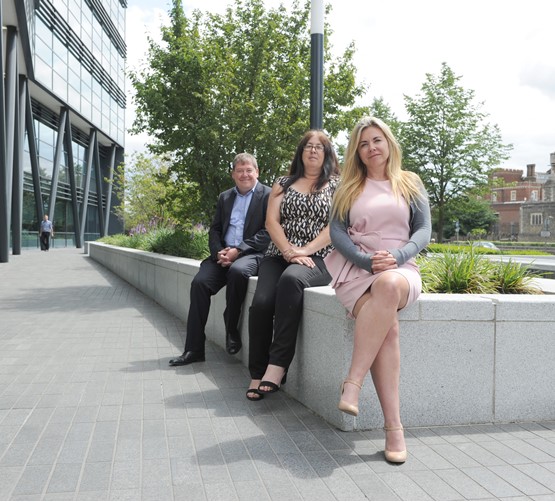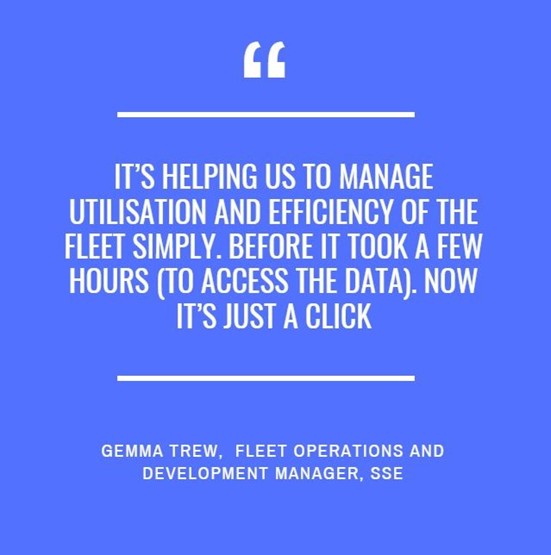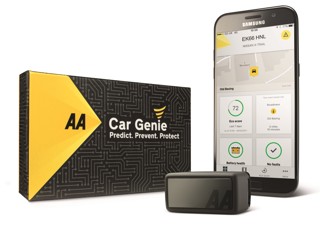Data helps the energy company identify savings and efficiencies, while planning keeps the fleet relevant and compliant, reports Stephen Briers
Fleet decision-makers are entering unprecedented times.
Government and local authorities are outlining air quality-related proposals for the next 30 years or so, affecting the type of cars, vans and trucks fleets select, while technology is opening up opportunities and challenges alike.
Never before have fleets needed to look so far into the future when recommending business strategies.
SSE (formerly Scottish and Southern Energy) has responded by undergoing structural and process change, safeguarding its fleet against anything thrown at it by legislators or the relentless pace of technological advancement.
As part of the transformation, the company has extended its planning cycles from two-to-three years ahead to a decade or more to ensure the fleet evolves to remain relevant and compliant. That’s crucial given it keeps some vehicles for up to 10 years.
Gemma Trew, SSE fleet operations and development manager, explains: “We need to be aware of future legislation, such as low emission zones, to ensure we have the right vehicles.
"We need to understand how it affects our HGVs and the departments that use them, so we can come up with new practices.
“We’ve replaced like-for-like in the past but we now go out and see them working to identify the different equipment and the vehicles we could use in the future that will benefit their role.”
A major change is the introduction of clean air and low emission zones into major cities from next year. SSE’s vans are all Euro 6 diesel, but most of its trucks are not.
“We are monitoring all our vans and trucks to see which ones will be going in and out of a clean air zone to make sure they have the right engines,” says Trew.
“We also notify the manager that their vehicle is going into an area that will be a charge zone to gradually build up their knowledge.”

The company is undergoing a renewal programme for its trucks and Trew is confident this will ensure the majority of the fleet is not affected by the new air quality rules.
SSE operates one of the largest fleets in the UK, with 2,300 cars, 6,000 LCVs and 215 HGVs.
Operating cycles vary from four years for cars to 10 years for HGVs, usually determined by a combination of mileage and by the longer write-down cycles for any ancillary equipment installed on the trucks.
The company is switching funding provider for vehicles up to 3.5 tonnes from Lex Autolease to Zenith after the latter won the tender last year. Larger vehicles are funded through Hitachi.
Due to the long operating cycles, it will take seven years to wash through all the vehicles, during which time SSE will be managing data reports from three leasing companies, adding complexity.
SSE’s solution is to introduce Ultra fleet management software, initially bringing together data on driver behaviour.
However, as the reporting requirements develop and the available applications in the management software grow, the entire fleet is gradually transitioning across, including maintenance, repairs, utilisation, telematics, fuel and fines.
Trew says: “It’s helping us to manage utilisation and efficiency of the fleet simply. Before it took a few hours (to access the data). Now it’s just a click.”
SSE will continue with two leasing providers rather than bringing everything together because “we have such a varied fleet that we need providers with specialisms in different areas”, Trew says.
She adds: “It also brings in competition, and we can take good ideas from one leasing company and apply to another which gives the best service for our business. It means more meetings, but it’s the same process, so it isn’t too challenging.
“The leasing companies have different ways of working. Some are good at data management, others are more technical, some are operational.”
SSE has also been able to build a wider network of contacts through its leasing partners, both suppliers and relationships with other fleets.
“Even if we work with other energy suppliers, it’s about sharing best practice and helping each other out,” Trew says. “If you stick with just one leasing company or just talk to the same fleets, you can become close-minded.”
Successes from sharing ideas include making SSE’s smart metering vans less compartmental, with bigger shelves using lighter materials. The weight reductions cut fuel consumption, saving £400 per van.
Following a major marketing campaign to promote SSE’s rebrand from Scottish and Southern Energy, Trew recommended toning down the livery which is saving another £800 per van.
Innovation and new projects have become a core part of Trew’s responsibility after she was promoted to her current role five months ago by new head of fleet and travel Simon Gray.
Previously head of fleet management at Mitie, Gray joined SSE last year and almost immediately identified a need for the business to evolve and adapt to new technology and changing legislation.
“The company wants to be more efficient and this drives change,” Gray says. “This is where our focus is.”
Although Trew is now directly responsible for developing initiatives to boost efficiency, productivity and safety, it is an area in which she has history.
A chance to influence change came shortly after she joined the fleet in 2009 when it appointed Lex Autolease.

Previously, SSE had replaced most of its vans at the same time; Trew used the opportunity to streamline the programme to around 1,000 a year.
This puts less strain on the fleet team but also enables the company to constantly innovate, learning from its experiences each year to improve the process and the vehicles procured the following year.
“It also enables us to reduce CO2 more quickly, react to congestion and low emission zones, assess the equipment we use and apply new safety rules,” Trew says.
The process has been further flattened since the move to Zenith, with around 100 vans targeted to be replaced each month.
“This helps with branding, build specs and innovation,” Gray says. “If you become a busy fool, you can never keep up with everything.”
As head of fleet and travel at a business with some 15,000 permits to drive and 20,000 employees, Gray needs to manage his own time effectively.
Travel is a significant element within SSE due to the operational nature of the business and its apprentice training programmes. Any night of the week, it can have up to 450 people staying in hotels.
The question for Gray is: how does he make fleet and travel work together to be more efficient?
The answer involves bringing data together to analyse popular routes where car share, both pool and daily rental, might be an option, either for the entire journey, or at the start or end of a journey.
“This is not just about the company car or van driver; it’s the culture of travel,” Gray says.
He cites as an example having four people on the same flight, heading to the same location. SSE will ensure they share the onward transport and not book four different travel elements to reach their destination and return.
“In a diverse and large business with the volumes of travel that we do, this is not as easy as it sounds, but data, combined with collaborative working between our suppliers and booking teams, will definitely assist us,” Gray says.
Fleet mobility, particularly in the face of the forthcoming air quality rules and the determination of major cities like London to allow only electric vehicles to enter, is high on his agenda, although it does bring challenges.
Switching to electric is not currently the best economic or operational option for larger vans and trucks, where cost is prohibitive and few vehicles are available.
SSE has trialled the electric Tevva but limitations mean it is only suitable for carrying smaller or lightweight loads. Capacity is key as many vans are used for smart metering purposes in London and need to carry up to two weeks’ worth of spares.
However, electricity does offer other solutions. One example under consideration is to electrify the lifts used for street light repairs to prevent vehicle idling.
“As a responsible company, we just need the product and then we can change,” Gray says. “As an energy provider, we have our own solutions to provide the infrastructure that goes beyond just the provision of a charging pole.
"We can also provide the upgrades to the supply network that sits behind the pole, so we are looking as a business at our current fleet utilisation and our Enterprise business is even helping other fleets to electrify.
“Utilising the Ultra reporting technology, we can see our van use in a simple format on a daily, weekly, monthly, quarterly and yearly basis.
"This allows us to understand not only where a vehicle is under-utilised, but also those depot-based vehicles that could be replaced with an electric or alternative-fuelled vehicle.”
In addition to 8,500 vehicles, the fleet team also manages SSE’s 1,300 large plant assets and 3,000 items of small plant equipment.
Here, Trew has assisted the plant team to implement a number of projects, including right-sizing the van to the requirement.

“We used to supply the van with all the small plant items inside; now they take them as separate items,” she says. “This is helping us to downside the vans and trucks.”
Data management is one of the company’s biggest triumphs. Previously, many managers were not acting on the driver data provided, but when SSE brought in an external data company for reporting, it all changed.
Drivers now receive text messages revealing their telematics scores on speeding, acceleration and harsh driving, and the information is also given to the managers to take action.
“It has influenced them to make changes and we have reduced accidents,” Trew says.
Driving events have fallen from 23 per thousand miles to 17.6 in just a few months; it means employees have travelled 2.4 million miles more safely in that time.
Gray says: “Being able to report the statistics in this way makes the executive board sit up and take notice.”
The next project will further incorporate the telematics data with TomTom sat-nav for live feedback (for example, the system will beep when drivers go too fast), which provides live, in-cab driver coaching.
Combined with an anticipated decrease in idling, SSE estimates this step will reduce fuel consumption by 11%. A test group of 58 vehicles has already proven the case over a 16-week period, so the system is now being rolled out to more than 2,000 vans.
TomTom is also being installed in trucks, for route formatting including alerts about low bridges. It will form part of a fleet-wide utilisation project over the coming months, although the data reports have already enabled SSE to reduce its fleet size by a few hundred vehicles.
“There are probably another few hundred vehicles (to be removed); it just needs a bit more influencing of culture,” Trew says.
“It will also enable us to share under-utilised vans across cost centres, reducing hire costs.”
New technology is being trialled in other areas, including an app for daily checks. It sends images of any faults with the truck’s unique QR code automatically to Hitachi, which assesses the urgency and takes appropriate action.
The next stage is to roll out this technology to cars and vans with Lex and Zenith both preparing their processes to incorporate the new ways of working.
Data also plays a crucial role during annual manufacturer reviews. SSE uses a matrix that compares their reliability and downtime data with its own to get a realistic picture of performance.
It has changed the way the company negotiates its terms, agreeing discounts based on its own average downtime per van figures.
However, Brexit is starting to colour the debate, as manufacturers begin to exercise caution.
“We are getting shorter terms from manufacturers, only seeing three-to-six months whereas before it was up to two years,” Gray says.
“Also, some manufacturers are not taking the risk of bringing vehicles into the country without an order.
“So it’s build-to-order and that’s increasing lead times by a month or two.”
Such challenges, like the others thrown down by Government legislation and evolving technology, have become grist to the mill for SSE with its long-term strategic focus.
Prioritising process-driven innovation, borne from projects championed by the whole fleet team, ensures the company is now fully prepared for the future.
Focus on the car fleet
SSE has moved from the complexity of a blended car scheme, which offered employee car ownership, leasing and salary sacrifice, to the simplicity of leasing following changes to the optional remuneration arrangements (OpRA) and a move to a new contract hire provider.
Carolyn Aston, who runs the car scheme, explains: “The OpRA changes coincided with a switch of supplier which gave us two sets of change to manage. We dropped salary sacrifice because there was no real cost benefit, affecting around 1,000 people.”
At the same time, SSE switched its main company car scheme, all job-need drivers, across to leasing. It continues to offer a cash alternative and some employees have taken the option, but the new WLTP fuel testing regime presents a bigger challenge.
“We were due to replace around 900 cars this year but only 30% have placed an order due to the lack of clarity on WLTP and benefit-in-kind tax,” Aston says.
“We have been sympathetic. We are still inviting drivers to change their cars but if they aren’t able to find one that meets their requirements, we aren’t forcing them to make a decision.”





















Login to comment
Comments
No comments have been made yet.